We all know that fussy child who has refused to ea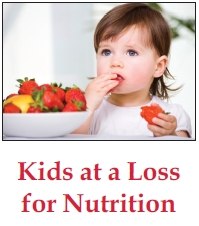 t anything but chicken nuggets for weeks on end. “It’s a phase,” her parents say. “She’ll grow out of it soon.”
t anything but chicken nuggets for weeks on end. “It’s a phase,” her parents say. “She’ll grow out of it soon.”
They’re right to a certain extent. All children go through some amount of “stranger danger” with foods, not wanting to eat anything but a few familiar items. Too many kids—from the very young to teenagers—never learn to eat a balanced diet, however. They are caught in a nutritional rut, eating mostly brown and white foods that are fried, white carb-heavy and/or sugar laden. “Hence, they are missing out on many essential vitamins and minerals along with antioxidant and anti-inflammatory compounds,” say Jaimie Proctor, M.S., R.D., manager of nutrition and education, Family Food Experts (home of the Kid Kritics Approved Seal) Deerfield Beach, FL, and Ellen Briggs, founder of Family Food Experts.
Proctor and Briggs add, “French fries and ketchup have been listed as the top vegetables kids eat—neither count in our book.”
Angelica S. Vrablic, Ph.D., manager of nutrition research at Solgar Vitamin and Herb, Leonia, NJ, backs this up with information collected by the U.S. Department of Agriculture (USDA) (1). “We know that less than one-half of children consume the USDA-recommended number of servings in any given food pyramid group and almost 80% do not eat the recommended number of nutrient-rich fruits and vegetables,” she states.
Retailers, one of the best favors you can do for families that shop in your store is to be knowledgable about nutritional deficiencies that are common among kids—even well-fed ones. Talk to parents about avoiding common pitfalls and how natural foods and supplements companies are making it even easier to fill in the voids.
There’s a Hole in the Bucket
Hoping kids will one day “catch up” on absent nutrients misses the mark. “Because the period between ages four and 13 consists of rapid physical growth as well as rapid cognitive and social development, the nutritional requirements for children are higher in proportion to body weight than they are for adults, and deficiency or low levels of such nutrients can have serious and even life-long health consequences,” says Lisa Lent, founder and CEO of Vitalah, Watsonville, CA. In fact, nutritional deficiencies can cause a host of health problems in children from lack of energy to brittle bones.
One of the most common missing nutrients is iron, says Amy Marlow, MPH, RD, CDN, nutrition advisor for Happy Family, New York, NY, noting that this is especially prevalent in babies and young children. The body uses iron to make oxygen-carrying hemoglobin. A lack of hemoglobin in the blood 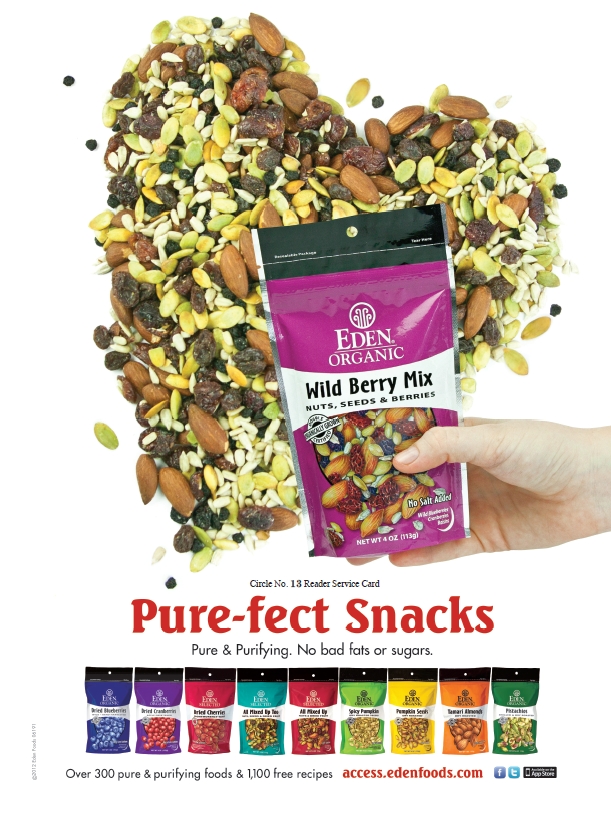 (often caused by an iron deficiency) can mean cells and tissues aren’t getting enough oxygen. Over time, fatigue, weakness, dizziness and other symptoms could result.
(often caused by an iron deficiency) can mean cells and tissues aren’t getting enough oxygen. Over time, fatigue, weakness, dizziness and other symptoms could result.
Marci Clow, M.S., R.D., senior director of formulation, scientific review and regulatory, Rainbow Light Nutritional Systems, Santa Cruz, CA, points us to a U.S. Department of Agriculture (USDA) survey that found about 60% of one-year-old children weren’t getting enough iron.
Several experts feel the reasons are two-fold: not enough produce in the diet and the poor quality of what is eaten. Chris D. Meletis, N.D., director of science and research for Trace Minerals Research, Ogden, UT, says low-quality soil generates low-quality crops. He states, “You can’t get nutrients that aren’t in the soil. And after generations of crops going to the market, and since the full array of trace minerals are not added back to the soil, we end up having food products that just aren’t as good as they could be compared to a few generations ago.”
Ken Whitman, president of Natural Vitality, Austin, TX, says the drop in crops’ nutrients is about 15–75% from just 50 years ago. “Combine this nutrient deficit with the fact that typical children’s diets are high in sugar, dairy, wheat, soy and food additives and it’s easy to understand why quality supplements are important,” he states.
Given how important iron is to growing bodies, food companies often boost products with this important mineral. For instance, Marlow says her company’s infant cereals are iron-fortified.
As with iron, experts feel there’s a gap in children’s diets with another important mineral: zinc. This trace mineral, of course, is known for immune health. But deficiencies in kids and teens can also lead to stunted growth (2).
Another basic need not being met is adequate vitamin D intake. This deficiency often starts in childhood—sometimes even infancy—from a variety of factors and can snowball over time. “Several recent studies have noted an increased problem with vitamin D deficiency (3). This deficiency can cause  several problems leading to disease,” states Lester Burks, CMO of Life Line Foods, LLC, Pikeville, TN.
several problems leading to disease,” states Lester Burks, CMO of Life Line Foods, LLC, Pikeville, TN.
In children, vitamin D deficiency can cause brittle bones and osteoporosis later in life as well as immune system issues, heart disease and other problems. Some even believe there’s a link between autism and vitamin D deficiency. The situation is so acute that some in the medical community feel all children should be routinely checked for vitamin D deficiencies (4).
Food makers are doing their part to help ensure kids are getting enough D. States Robyn Mermelstein, senior brand manager at Earth’s Best, Melville, NY, “Since vitamin D is naturally present in very few foods, Earth’s Best developed the Sesame Street Smoothies as a rich source of vitamin D.”
Hand in hand with D, kids should make sure they have sufficient calcium intake each day. Clow says, “More than 86% of girls and 63% of boys ages 12–19 are not getting adequate levels of calcium, according to the Surgeon General’s Report on Bone Health and Osteoporosis.”
Unfortunately, vitamins and minerals aren’t the only thing parents may worry about. Pediatrician and author Alan Greene, M.D., cites fiber intake as a place where kids are falling far behind. “They’re still getting way too much processed white flour,” he feels. In a 2008 study of toddlers ages one to two, the average fiber intake was just 8.7 g/day, well below the recommended intake of 19 g/day (5).
Claire Cretors, president of Cornfields, Inc., Waukegan, IL, speaks of whole grains, often a great way to boost one’s fiber intake (though the amount varies by the grain). She states, “The most recent Dietary Guidelines for Americans, released in January 2011, recommends that all adults eat at least half their grains as whole grains—that’s at least three to five servings of whole grains. Children need two to three servings or more.”
Cretors notes that popcorn is a whole grain, fiber-rich food. “With our GH Cretors popped corn, we haven’t done anything to it except pop it, so the natural whole grain benefits are maintained in the final product. Our kettlecorn has 16 g of whole grains per 28 g serving,” she states.
For kids on a gluten-free diet, Jerry Bigam, president of Kinnikinnick Foods Inc., Edmonton, AB, Canada, explains that his firm adds extra fiber and fortifies its bread and buns. “While this is commonplace in the conventional industry, we have been and still are one of the only gluten-free companies to do so,” he states.
Bigam’s point is especially noteworthy given that children on a gluten-free diet have fewer options for high-fiber whole grain foods. States Jill Robbins, president of HomeFree, LLC, Windham, NH, “Whole grain can be a challenge! For the more than one in 20 people now seeking gluten free, it can be even more difficult to get the three recommended daily servings.”
Another big hole in kids’ diets is in the area of omegas, which are essential for brain and eye health. According to Keri Marshall, chief medical officer for Nordic Naturals and a licensed naturopathic doctor specializing in pediatrics, “The vast majority of children are not getting enough EPA and DHA through their diet because many of them do not eat food from the sea, specifically fatty cold-water fish such as sardines, anchovies or even wild salmon.” Fish sticks are often a child’s only exposure to seafood—not exactly an adequate source of DHA and EPA.
Dallas Clouatre, Ph.D., R&D consultant for Jarrow Formulas, Los Angeles, CA, says that the problem is magnified since kids and teens often have tons of pro-inflammatory omega-6s in the diet, because “the modern food chain is stacked grossly in favor of inexpensive vegetable oils containing mostly omega-6 fatty acids.”
The effect of this imbalance on children is not 100% clear, but some research in young adults found that supplementation with fish oil improves brain blood flow (6). And as we’ll learn later, others believe a child’s focus and behavior is positively affected with increased DHA intake.
It’s not just fish and fish oil that can help with omega-3 intake, though. Marlow says her company formulated some products with Salba, an ancient grain packed with protein, fiber, antioxidants and omegas.
 But one area some feel is misunderstood is protein. According to Doug Struthers, CEO of Ella’s Kitchen, most children get plenty of protein, “although many caregivers may think differently. Our nutritionists have seen time and again that children can meet their protein demands.” He adds that micronutrients like folate and vitamin A tend to be scarcer.
But one area some feel is misunderstood is protein. According to Doug Struthers, CEO of Ella’s Kitchen, most children get plenty of protein, “although many caregivers may think differently. Our nutritionists have seen time and again that children can meet their protein demands.” He adds that micronutrients like folate and vitamin A tend to be scarcer.
This could be because in addition to the obvious sources (like meat and poultry), protein is prevalent in nut butters, eggs, milk and cheese—all foods that many toddlers, kids and teens willingly scarf down. A child’s protein needs in grams can be determined by dividing his/her weight (in pounds) in half. So, a 50-pound child requires 25 grams of protein daily. He or she can make this up in one day with one glass of milk (about 8 mg of protein), 1.5 ounces of chicken (10 mg of protein) and one ounce of cheese (7 mg of protein).
Another great kid-friendly source of protein is yogurt—especially brands that don’t add a ton of sugar. “We think parents appreciate that when their kids eat our yogurt, they’re not consuming empty calories. They’re getting all the good stuff their growing bodies need while enjoying a taste they love,” says Jeff Pillet-Shore, senior brand manager, Stonyfield Farm, Londonderry, NH. As an example, one YoToddler yogurt cup offers 4 mg of protein while YoKids Greek yogurt offers 6 grams. Plus, they both have vitamin D, calcium and some formulas add in DHA.
Do You Know the (Healthier) Muffin Man?
Foods for youngsters are seeing an explosion of innovation that integrates powerhouse nutritious ingredients like quinoa, kale and lentils—many of which are not typically associated with kids’ foods. Companies are getting creative, and kids (and parents) are loving it!
As noted, Stonyfield adds DHA to its YoToddler yogurts, “which supports visual and mental development,” states Pillet-Shore. “Our new Banana Pumpkin and Apple Sweet Potato flavors also include a delicious fruit and vegetable combination for added nutrition.”
Kinnikinnick Foods has made common practice of using ingredients (like pea flour) that normally aren’t found in gluten-free bakery items to up the nutritional offering. In addition, “We also use inulin (from chicory) in some of our kid friendly items for its prebiotic value,” says Bigam.
Plum Organics is another innovator in this area. Its products include a variety of superfoods like chickpea flour, lentils, kale, purple carrot, acai, beets and ancient grains (quinoa, in particular). Greene notes that Plum Organics also adds Greek yogurt into some products, “which is a great way to get calcium and vitamin D.” It’s noteworthy that these are products for babies and young children. “The earlier you expose kids to a variety of great flavors, the more likely they are to like them now, and down the road,” he adds.
Happy Family is also a quinoa fan, since it provides essential amino acids and protein, states Shazi Visram, CEO and founder. Plus, the company boosts some products with pre/probiotics and choline for brain development and healthy eyes, she adds.
Meanwhile at Ella’s Kitchen, the point isn’t “boosting.” States Struthers, “We are able to assure our moms and dads that their children are getting the benefits of these touted foods such as dark leafy greens and protein-rich legumes.”
Along the same lines, Zak Normandin, founder and CEO of Little Duck Organics, Brooklyn, NY, says his company focuses on raw ingredients that are naturally packed with vitamins and nutrients. “Our Tiny Fruits are a convenient snack for kids that are just as good as a fresh cut piece of fruit—without nixing the nutritional benefits.”
Proctor and Briggs feel that parents’ only options aren’t prepared superfoods and functional foods, though many are Kid Kritics Approved. “We still emphasize the need to prepare and offer the original source of the nutrients such as a very finely chopped, lightly sautéed kale or spinach with a squeeze of lemon juice and topped with some grated cheese,” they say. “It’s important for children to develop healthy eating habits so that they continue this lifestyle later in life.”
It’s Raining, It’s Pouring Supplements: How and When to Use Them
Nearly everyone interviewed for this piece agreed that children should get the bulk of their nutrition from foods.
Nonetheless, Jonny Bowden, Ph.D., CNS, (aka “The Rogue Nutritionist”) author and scientific advisory board member at Barlean’s, Ferndale, WA, feels supplementation is appropriate in most cases. “There are many fine products for kids that fill in the gaps of what they may be missing. A multiple and omega-3s are always a good idea, for anyone at any age.”
Indeed, there is much research showing the benefits that children receive from taking a multivitamin, some of which may surprise you. For instance, Clouatre cites a study in which kids (ages 8–14) took a multivitamin for three months and experienced “significantly improved cognition and mood” (7).
 Vrablic references another trial in which multivitamin/mineral use was “significantly higher in children and adolescents with excellent/very good health status as compared to those reporting poor/fair health status (8).”
Vrablic references another trial in which multivitamin/mineral use was “significantly higher in children and adolescents with excellent/very good health status as compared to those reporting poor/fair health status (8).”
In another study of 2,423 children, simply starting a multivitamin regimen at or before the age of four was enough to reduce sensitivities to food allergens by 39% and seasonal allergies (9). “[These] findings suggest that a broad-spectrum moderate potency vitamin and mineral supplement starting at a relatively early age may be useful for the majority of children,” says Clouatre.
Options for kids’ multis are plentiful, many of which are as appealing to children as they are to parents. States Vrablic, “We know that children can be picky eaters, so a great-tasting chewable multivitamin/mineral supplement can be an advantage.” Company offerings range from effervescents to gummies to liquids (see the online version of this article for complete offerings). Lent warns us, “Each form has pros and cons, but I suggest avoiding candy forms of vitamins that are traditionally high in sugar and may be low in important nutrients…In addition, any children’s supplement should be third-party tested by an independent laboratory to ensure that the product is not only meeting label claims for potency, but that it is free of heavy metals and PCBs.”
To Bowden’s earlier point, omega-3s are a smart supplement for kids. Even though food companies are making a valiant effort of boosting DHA and ALA content, there’s still an imbalance in kids’ diets with respect to omegas. States Marshall, “Excess omega-6 coupled with a deficiency of omega-3 has been shown to contribute to many chronic health conditions because these two fats compete for the same pathways in the body.” When too many omega-6s are conusmed, the body often develops extra pro-inflammatory markers that contribute to overall inflammation. “Supplementing with omega-3s also helps to restore a healthy balance between omega-3s and omega-6s,” she states.
Another vitamin to consider supplementing with is vitamin D. According to Burks, children need at least 400 IUs. “In today’s sedentary world, children just aren’t getting outside enough. One study says, ‘most American children may not be going outside enough to meet their minimal (~600 IU/day) or optimal (≥1,200 IU/day) vitamin D requirements’ (9),” he states.
In agreement is Hallie Rich, founder of Rich Vitamins LLC (makers of alternaVites Kids), New York, NY, who says even when kids are outdoors, they are “lathered in sunscreen (appropriately so)…[thus,] the amount of vitamin D they are consuming is not optimal.”
And, it’s tough to meet children’s daily requirements on food alone—and it is even harder for a child with a known deficiency to make up the difference with just diet.
For this reason, Hero Nutritionals recommends, “Vitamin D from birth on and magnesium if there is any indication like constipation or behavioral changes…Vitamin D is so essential to get daily, which is why we made the new line of our high-potency D3 [gummies].”
So, remind parents they need to build children a solid foundation by offering nutritious whole foods and smartly formulated food items. Then, fill in the gaps with supplements. States Clow, “Supplements should be used for what their name suggests: to supplement nutrients into the diet to support optimal growth and healthy cognitive development, not as a replacement for the many other benefits received from food.” WF
* * *

Most parents know that feeding kids sugary foods and caffeinated drinks can make for an, ahem, interesting play time. What parents may not know is that many other ingredients can set off a child. Items like artificial food dyes and gluten can affect behavior, focus and even symptoms of autism.
While foods and supplements can’t cure conditions like autism and attention deficit hyperactivity disorder (ADHD), some evidence points to ways diet can support calmer, more focused behavior.
The Risky Rainbow
Yellow No. 5 may sound as harmless as a crayon, but first impressions can be deceiving. There are well-studied and convincing reasons to stay away from artificially colored products. Says pediatrician and author Alan Greene, M.D., “There’s a growing body of evidence suggesting that artificial dyes can affect kids’ behavior, including symptoms like ADHD. Studies of thousands of kids show that just getting rid of those chemical dyes can improve their behavior on the same order of magnitude as prescription ADHD drugs.”
One group of studies linking hyperactivity to dyes were the monumental  University of Southampton studies from 2007 and 2010. The U.K. researchers removed all artificial dyes and chemicals from kids’ diet, and their behavior improved. “That could have just been due to the home-cooked food or the attention they were getting,” says Greene. “But then, they did something clever.” He explains that kids were given red juice, either artificially or naturally colored. “During the weeks the kids got the chemicals, their behavior was measurably worse; it got dramatically better in the weeks they weren’t getting them,” he states. The preservative sodium benzoate also increased hyperactivity in children (even those without ADHD), especially when mixed with artifical colors. Partly in response to this research, the European Food Standards Authority banned the chemicals. “I think there’s a clear link to kids’ behavior…there’s no benefit to having them in the diet. There’s just potential risk,” states Greene.
University of Southampton studies from 2007 and 2010. The U.K. researchers removed all artificial dyes and chemicals from kids’ diet, and their behavior improved. “That could have just been due to the home-cooked food or the attention they were getting,” says Greene. “But then, they did something clever.” He explains that kids were given red juice, either artificially or naturally colored. “During the weeks the kids got the chemicals, their behavior was measurably worse; it got dramatically better in the weeks they weren’t getting them,” he states. The preservative sodium benzoate also increased hyperactivity in children (even those without ADHD), especially when mixed with artifical colors. Partly in response to this research, the European Food Standards Authority banned the chemicals. “I think there’s a clear link to kids’ behavior…there’s no benefit to having them in the diet. There’s just potential risk,” states Greene.
In 2011, the U.S. Food and Drug Administration (FDA) considered prohibiting artificial food dyes or issuing a warning on products containing artificial colors. They voted very narrowly (8:6) against outlawing them. While FDA’s analysis didn’t connect dyes and hyperactivity, many feel there’s still cause for concern.
States Jeff Pillet-Shore, senior brand manager, Stonyfield Farm, Londonderry, NH, “Since so much is still unknown about how these chemicals impact our health and their relation to childhood disorders that are becoming increasingly widespread, parents want to give their children the purest foods possible.”
Doug Struthers, CEO of Ella’s Kitchen, sees the bright side: FDA’s decision increased awareness about the dangers of artifical additives. He also points out that industry groups are doing their best to ensure shoppers understand their options. Struthers states, “The Center for Science in the Public Interest is one of our biggest advocates, and while for now these ingredients still make their way into our food supply, we need to continue to empower the consumer to make better choices.”
So, companies in the natural/organic channel are sticking to their guns. “Although there are definitely two sides to the issue surrounding food coloring, we are confident that there is nothing natural or organic about artificial colors,” says Zak Normandin, founder and CEO of Little Duck Organics, Brooklyn, NY.
Ellen Briggs, founder of Family Food Experts (home of the Kid Kritics Approved Seal), Deerfield Beach, FL, and Jaimie Proctor, M.S., R.D., manager of nutrition and education, Family Food Experts, feel parents should raise concerns about dyes with their wallets. “The best way to get food manufacturers to stop adding artificial colors to foods is to stop buying them,” they say. And, teach children about the issue. “If kids know how artificial colors can affect their bodies, they will be more likely to avoid them,” the pair believes.
Artifical Intelligence
This issue is bigger than dyes and hyperactivity. “The use of artificial sweeteners disrupts signals of hunger and satiety and can lead to overeating and weight gain,” Briggs and Proctor say. “Artificial sweeteners have been linked to dizziness, migraines, nervous system disorders and even certain cancers.”
 Food choices can also affect kids’ energy levels. “Eating too many refined foods and those that are loaded down with simple sugars tends to deregulate our little ones’ energy levels. What we see are moody kids, running out of steam and losing focus,” says Struthers. “By promoting and thus consuming a diet that is balanced and rich in complex fuels we can feel more confident that our kids will be fueling their noodles.”
Food choices can also affect kids’ energy levels. “Eating too many refined foods and those that are loaded down with simple sugars tends to deregulate our little ones’ energy levels. What we see are moody kids, running out of steam and losing focus,” says Struthers. “By promoting and thus consuming a diet that is balanced and rich in complex fuels we can feel more confident that our kids will be fueling their noodles.”
Another potential harm is allergies. Jill Robbins, president of HomeFree, LLC, Windham, NH, says one in 13 kids has food allergies. “Many families with allergies avoid artificial colors not only because of possible sensitivities, but also because there can be traces of allergens in the colors,” she says.
Chuck Marble, CEO of Elevation Brands, LLC, Framingham, MA, says avoiding potential allergens are leading families to demand cleaner labels overall. “Moms are becoming more aware of the benefit to not have artificial ‘anything’ in their food,” he states, adding, “It is a medical fact that any child diagnosed and treated for food allergies will enjoy a better quality of life. Regardless if the medical community can determine the correlation, if a child’s behavior improves, whether perceived or real, the quality of life for that child is what matters.”
Autism and Diet Adjustments
While we know autism affects social and communication skills, there are numerous unknowns about the condition. Why does it develop in some children? What triggers it and what can help it go away? Can diet be a factor?
While the answers are not cut and dry, some children with autism or neurological disorders are especially sensitive to artificial ingredients, food additives and other ingredients. One’s diet doesn’t cause autism, but some changes may actually address some symptoms.
In April, WholeFoods published the details of a new study indicating that a gluten-free/casein-free (GFCF) diet can help relieve some symptoms of autism (10). Overall, children with gastrointestinal issues and food allergies had improved behavior, physiological symptoms and social behaviors on the GFCF diet (especially those that followed it the strictest). This meant better language skills, eye contact, attention span and more.
This isn’t the only qualitative data on the matter. States Robbins, “The scientific research is not yet conclusive, but many in the autism community are convinced that a GFCF diet makes a big difference to the behavior, focus and other symptoms of autism.” She adds that parents have reached out to her company about their experiences. “Since adding certified gluten free to the many dietary needs HomeFree cookies meet, there has been an enthusiastic response to our cookies from this community,” says Robbins.
Other anecdotal evidence comes from Jerry Bigam, president of Kinnikinnick Foods Inc., Edmonton, AB, Canada. He says his company won’t put gluten, dairy or soy in its products as a direct response to requests from parents with autistic children. “The response that we have seen over the past 10 years supports the view that for many children a gluten-free, dairy-free, soy-free diet can have a dramatic positive impact on behavior,” he states.
What’s behind the possible connection? Autistic children may not digest the proteins and peptides in gluten and casein properly. “Some believe that the brain treats these proteins like false opiate-type chemicals. The reaction to these chemicals, they say, leads a child to act in a certain way,” according to WebMD (11). So, removing gluten and casein may improve social and cognitive behaviors and speech.
Parents may also want to steer clear of toxins (like pesticides) and heavy metals. A recent article from Environmental Health Perspectives (12) published a list of preventable environmental toxins that experts feel could cause mental neurotoxicity, and a shortlist of possible chemicals related to autism and learning disabilities. The top 10 are:
(like pesticides) and heavy metals. A recent article from Environmental Health Perspectives (12) published a list of preventable environmental toxins that experts feel could cause mental neurotoxicity, and a shortlist of possible chemicals related to autism and learning disabilities. The top 10 are:
1. Lead
2. Methylmercury
3. PCBs
4. Organophosphate pesticides
5. Organochlorine pesticides
6. Endocrine disruptors
7. Automotive exhaust
8. Polycyclic aromatic hydrocarbons
9. Brominated flame retardants
10. Perfluorinated compounds
Let’s Focus!
The story of nutrition, behavior and attention doesn’t stop with food. Supplementation plays a major role, too.
“Both [autism and ADHD] have been studied in light of the role that diet may play. The link between diet and behavior, focus and autism is well documented by research as well as the benefit that supplements are to these conditions,” says Lester Burks, CMO of Life Line Foods, LLC, Pikeville, TN.
Omega-3s. Some of the most compelling research in this area links low levels of omega-3s with issues like attention and focus problems along with behavioral problems. “I routinely test for brain neurochemistry in my practice, and then supplement according to the findings of what their brain chemistry looks like on paper,” says Chris D. Meletis, N.D., director of science and research for Trace Minerals Research, Ogden, UT.
Much research points to the importance of DHA supplementation in children for memory and behavior support. Here is just some of the most recent published work on the subject:
• A research group in Australia gave either a placebo or an EPA/DHA oil to 90 children (seven to 12 years old) (13). After four months, kids with higher DHA levels in their bloodstream had better reading skills and better behavior than the others. The results were especially prominent in children with learning disabilities. They had improved reading, spelling, behavior, attention, calmness and overall ADHD symptoms, the group said.
• Evidence also shows long-term benefits. In one study, kids with high DHA levels in their cord blood after birth showed less hyperactivity or inattention 10 years later (14). In another, babies that drank DHA-fortified formula had full-scale and verbal IQ scores that were higher than those fed unfortified formula (15).
• In an analysis by the National Institute on Alcohol Abuse and Alcoholism, researchers found that DHA/EPA deficiencies early in life (during critical periods of neurodevelopment) may cause a cascade of “suboptimal” neural development. This may manifest as atypical responses to stress such as aggression. The team concludes, “Ensuring optimal intakes of omega-3 fatty acids during early development and adulthood shows considerable promise in preventing aggression and hostility” (16).
 These findings aren’t a huge surprise to most people in the nutrition world. Essential fatty acids (EFAs) are found in the brain and cell membranes throughout the nervous system. Thus, EFAs like DHA contribute to the fluidity of cell membranes, which benefits membrane function and nutrient uptake.
These findings aren’t a huge surprise to most people in the nutrition world. Essential fatty acids (EFAs) are found in the brain and cell membranes throughout the nervous system. Thus, EFAs like DHA contribute to the fluidity of cell membranes, which benefits membrane function and nutrient uptake.
“Small clinical and pilot studies have indicated that supplementation with omega-3s may be beneficial to children with autism spectrum disorder and hyperactivity,” states Keri Marshall, chief medical officer for Nordic Naturals and a licensed naturopathic doctor specializing in pediatrics. “Further research is currently being conducted and is necessary, but, in my opinion, there is ample evidence to indicate that children benefit from omega-3 fatty acid supplementation and suggest that omega-3 EFAs may have therapeutic implications for behavioral disorders.”
B-vitamins. The B-vitamins are often associated with energy, but they also have a connection to behavior. Meletis explains why: “Kids have growing brains, and they need to be fueled properly. B-vitamins are essential for the proper production of serotonin, dopamine, norepinephrine and epinephrine.”
That’s a lot of responsibility given that (among other major responsibilities) serotonin is linked with mood and depression; dopamine regulates emotional responses; norepinephrine increases blood pressure in the fight or flight response; and epinephrine causes bursts of energy and accelerated heart rate during challenging situations. Says Meletis, “If any of these are off, ‘Houston, we have a problem!!!’”
Carolyn Dean, M.D., N.D., connects B-vitamins and the enzyme called PI 3-kinase, which plays a critical role in cellular function, including growth and survival. It is found in large amounts in tumor cells, and is a hot topic in cancer research.
Dean points out two reasons why parents should care about PI 3-kinase. First, it helps break down gluten and casein. Second, it enables the processing of some B-vitamins. “Without proper processing of B12 into methylcobalamin and folic acid into folinic acid,” she states, “hundreds of functions are impaired.”
For example, a lack of B12 will make it tough for the liver to produce glutathione, which means that the body can’t properly detoxify heavy metals, Dean says. “Heavy metals that damage the gene are not excreted as they should be and continue to accumulate, causing more damage. These pathways are so intricate that giving children the wrong kind of folic acid or B12 can make matters worse,” she adds.
The link between damage to PI3-kinase and ADHD and autism is noteworthy. “Kids with ADHD may be expressing the damage in a lesser form. Also, the dietary treatment (avoiding gluten and casein) often works with kids with ADHD,” Dean states.
Indeed, several studies have linked abnormally high homocysteine levels with autistic children. Such levels could be a sign of an impaired folate-dependent methionine cycle and is associated with oxidative stress. Research has documented that autistic children tend to have significantly lower folate and B12 levels than other kids (17).
Another new study indicates that supplementing with both vitamins B6 and B12 plus folic acid can help maintain healthy homocysteine levels in autistic kids (18).
Other important supplements.
 • Iron deficiency-induced anemia could cause poor cognitive performance. The National Health and Nutrition Examination Survey III 1988–1994 of almost 5,400 children of various ages found lower scores on standardized math tests in kids with iron deficiencies. This finding held for kids who didn’t have anemia, but lacked iron (19).
• Iron deficiency-induced anemia could cause poor cognitive performance. The National Health and Nutrition Examination Survey III 1988–1994 of almost 5,400 children of various ages found lower scores on standardized math tests in kids with iron deficiencies. This finding held for kids who didn’t have anemia, but lacked iron (19).
• In the September 2011 installment of WholeFoods’ Vitamin Connection, columnist Richard A. Passwater, Ph.D., and vitamin D expert John J. Cannell, M.D., stated vitamin D deficiency is an indirect “trigger” of autism. He noted, “Vitamin D does have a treatment effect on autism and I base this solely on what parents are telling me. I further predict that the treatment effect will be modulated by several factors.” Cannell explained that older children and kids more severely affected by autism will be less likely to experience benefits when taking D. Nonetheless, he says, “Autistic children need to have vitamin D levels that are in the high range of normal in order to show improvement.”
• Burks states vitamin E and carnitine deficiencies are linked to speech disorders common in autism spectrum disorders in a study. “It also mentioned that GI tract malabsorption of these nutrients may contribute to neurologic disorders,” he states.
• And, magnesium supports calm, focused behavior. “This essential mineral helps regulate blood sugar levels, promotes normal blood pressure and is required for producing and storing energy” (20).
The take-home lesson is that if parents suspect their child isn’t performing at his/her best, tell them to ask a healthcare provider about potential nutritional deficiencies and whether supplements can help. “Without the building blocks it needs, the brain may not be able to focus well causing school problems,” says Eileen Sheets, managing director, Bioforce USA, Ghent, NY. “It is easy to mistake tiredness, low blood sugar and depression for behavior problems. Kids can be picky eaters and supplements help to fill in the nutritional deficits.”
Rub-a-Dub-Dub, Safer Suds in the Tub
So many factors could be tied to a child’s behavior and focus—and personal care companies are also working to meet the needs of this clientele.
Brands are focusing on eliminating potential ingredients that could “set off” a sensitive child. The Monkey Sea Monkey Doo line, for instance, was designed by a mother whose child had severe allergies. Her bath line for babies and children does not include any major allergens. Says Maria Mills, president of the Irvine, CA-based company, “When we were in the process of designing the line, we had two specific communities we truly wanted to touch and be a part of. Those are the allergen and autism communities, which is why we designed our product to be free of peanuts, gluten, soy, dairy and oats.”
 Likewise, Ayo Hart, founder of Dolphin Organics, Pound Ridge, NY, says her firm made some special considerations about fragrance when designing its skincare products for babies and children. “We have had numerous conversations with parents and caregivers of autistic children as well as medical personnel. Most importantly, we launched with a completely fragrance-free line to address not only the needs of newborns and young children, but also the sensory needs of many children,” she states.
Likewise, Ayo Hart, founder of Dolphin Organics, Pound Ridge, NY, says her firm made some special considerations about fragrance when designing its skincare products for babies and children. “We have had numerous conversations with parents and caregivers of autistic children as well as medical personnel. Most importantly, we launched with a completely fragrance-free line to address not only the needs of newborns and young children, but also the sensory needs of many children,” she states.
Dolphin Organics, Monkey Sea Monkey Doo and others in the industry stress that using natural ingredients in skincare can make a big difference for those with special needs and sensitivities, but it’s also important for all kids. States Hart, “Dolphin Organics worked diligently to create our line free of so many of the harsh chemicals and irritants that children are exposed to daily. We constantly receive testimonials from parents who have finally found relief in their bathtime routine with our line.”
Take care that natural imposters aren’t on your shelves. “Companies can be sneaky and use ingredients that are not ‘all-natural,’ which can be harmful to a developing baby or child,” says Mills. “For example, if there is an ingredient on the label that says ‘fragrance,’ parabens or any synthetic ingredient can be hidden in there.”
So, take the time to read labels and talk to the manufacturer if you have questions.
Tear-free. We know babies have the softest skin in the world. Responsible natural companies diligently formulate products to ensure no bumps, no red and no tears. But how is this achieved?
Mills says she tested products on people near and dear to her heart: her kids. Step one was to make sure there weren’t any synthetic ingredients like SLS and parabens to irritate skin and cause other problems. “To make a clean, kid-friendly product,” says Mills, “it is imperative to work diligently by hand selecting each ingredient and…making moms aware of what they are using on their children.”
Hart agrees that parabens and phthalates are “obvious culprits” of irritation. But, she says high-quality products also avoid harsh chemicals such as PEGs, phenoxyethanol and cocamidopropyl betaine. Her line (which meets NSF/ANSI 305 to be at least 70% organic) is made with plant-derived, functional ingredients like coco glucoside as a natural foaming agent and xantham gum as a natural thickener. “The porous skin of babies and young children deserve the gentlest, safest products,” she states.
Hart also notes that the key to making a safe tear-free product is careful testing that ensures the product’s pH is as close as possible to the pH of a baby’s tears and skin.
Tactile problems. Skin irritations aren’t just about soap and lotion. Many children experience tactile deficits that make kids extra or under-sensitive to textures. “We know that children with autism and sensory processing disorder have an increased sensitivity to textures,” states Alexandra Merlino, CEO of Teres Kids, Santa Fe, NM. Even children with allergies and inflammatory skin conditions can have problems.
While the line was designed with all kids’ comfort in mind, Teres Kids clothing is especially appropriate for children with skin sensitivities or any kid that feels uncomfortable in “normal” clothes. The Teres Kids line uses only U.S.-made soft organic fabrics, sews seams on the outside away from the skin, and doesn’t use tags. “Teres Kids clothes has decreased reports and behaviors communicating discomfort in some children on the autism spectrum and with sensory processing disorder. Conclusive research on this has not been conducted to date,” says Merlino. WF

* * *
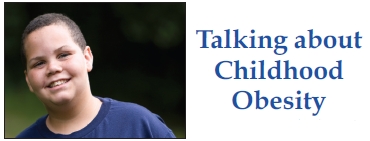
Childhood obesity rates have tripled in the past 30 years, according to some estimates, leaving kids vulnerable to a lifetime of health problems.
“Obesity is a symptom; it’s not the problem. What parents are feeding their children isn’t working,” says pediatrician and author Alan Greene, M.D.
Retailers are in the tough position of having to answer questions from concerned parents. While a healthcare provider will handle the diagnosis and care, a natural products store with an informed staff can be a tremendous resource for families.
Says Lisa Lent, founder and CEO of Vitalah, Watsonville, CA, “Retailers perform a crucial role in educating parents about the importance of nutrition, the latest in nutritional science and the role that supplements can play in achieving and maintaining optimal body weight and health for children.”
Here are the four ways to make sure your staff is prepared to handle this difficult issue:
1. Family matters. Instill a “we’re all in this together” attitude in families, without playing the blame game. “So often kids become heavy because of family habits,” says Chris D. Meletis, N.D., director of science and research for Trace Minerals Research, Ogden, UT.
In agreement is Jonny Bowden, Ph.D., CNS, (aka “The Rogue Nutritionist”), author and scientific advisory board member at Barlean’s, Ferndale, WA. He states, “The best approach for now is to understand that kids will model their parents’ behavior, will eat what’s in the house, and—even though they may protest at first—will eventually adapt to eating whatever you put out.” He acknowledges that there are numerous causes of obesity, and “we haven’t even identified all of them.” They include genetics, environmental toxins and chemicals, hormonal irregularities and more.
For starters, retailers can encourage families to turn off the television and exercise together. You could even help organize a walking club for families with kids. Make the starting and ending point your store to encourage sales.
2. The pill ill. Dissuade parents from the idea that weight-loss supplements are appropriate for kids as the answer to the problem. “Bottom line is that supplementation can certainly play a role in a healthy lifestyle, which includes a nutritious diet and physical activity, but there is no magic supplement bullet that can make this problem go away,” says Marci Clow, M.S., R.D., senior director of formulation, scientific review and regulatory, Rainbow Light Nutritional Systems, Santa Cruz, CA. She recommends a multivitamin at the very least for ensuring children are getting the nutrients they need.
In agreement is Hallie Rich, Founder Rich Vitamins LLC, New York, NY, who states, “Parents don’t always have the time to prepare healthy meals nor do they always have the money to buy organic and avoid purchasing processed foods. For these types of situations, a children’s multi is a great insurance policy.”
Keri Marshall, chief medical officer for Nordic Naturals and a licensed naturopathic doctor specializing in pediatrics, adds that the right omegas balance will support a healthy weight. “EPA supports optimal metabolism and body composition. The omega-6 GLA (gamma-linolenic acid), which is a beneficial omega-6 that is an exception to the rule, helps maintain optimal body fat metabolism,” she says.
3. Get in a healthy food mood. Remind parents about diet “no-nos.” Ken Whitman, president of Natural Vitality, Austin, TX, keeps it simple: avoid refined carbs and sugars. Parents should even look for them in “hidden” places and go for natural, whole foods. “Many carbonated beverages and processed foods (like hot dogs) contain phosphates. Phosphates bind with magnesium to make insoluble magnesium phosphate, a compound that is not absorbed by the body,” says Whitman. “Not only do children eat magnesium-deficient foods, some of the foods they do eat rob their bodies of this vital mineral.”
Dallas Clouatre, Ph.D., R&D consultant to Jarrow Formulas, Los Angeles, CA, reminds us that fresh produce is always a good idea—and that many children don’t eat nearly enough of it. “If 30% of American children do not eat fruits and vegetables on a daily basis—10–20 and 30% of children are not consuming any fruit or vegetable, respectively, daily—there are dietary issues,” he states.
Clouatre says juices aren’t the best substitutes for fruits, since they concentrate sugars and remove the beneficial fiber. “Whenever possible, eat the apple rather than apple juice, the orange rather than orange juice,” he explains.
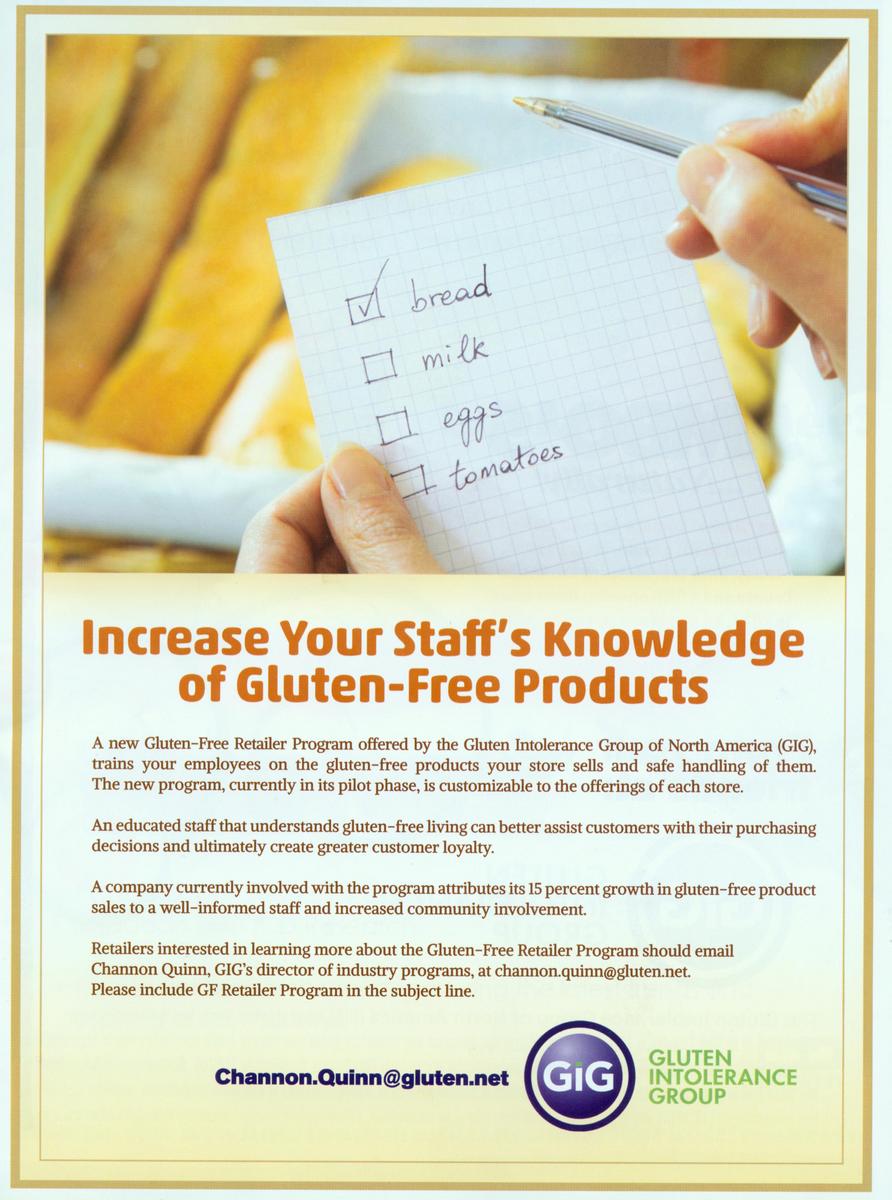 Keeping away from sugar is also important in supplements like gummies. According to Hero Nutritionals, all-natural sugar-free options are available that use inulin fiber and lo han fruit for sweetness.
Keeping away from sugar is also important in supplements like gummies. According to Hero Nutritionals, all-natural sugar-free options are available that use inulin fiber and lo han fruit for sweetness.
4. Family fun at your store. Get kids interested in the healthy products you offer. “Make healthy eating cool and hip and sexy,” states Bowden. “If you can do that, you’ve won the battle.”
• Zak Normandin, founder and CEO of Little Duck Organics, Brooklyn, NY, offers the idea of a hunt, courtesy of organic pioneer Maria Rodale. “Her game’s rules state that kids can stock the cart with snack foods if (and only if) they can find the USDA Organic label on the pack,” he explains. Another idea is to have an in-store trivia or scavenger hunt with clues about products in your store. This will get both parents and kids to read labels.
• Create a kids’ section in your store. Eileen Sheets, managing director, Bioforce USA, Ghent, NY, suggests including kids’ products and educational tools. Then, partner with healthcare providers who can do fun presentations on children’s health and healthy weight management, Sheets recommends.
• Lent offers up this interactive program: host a kids’ day in your store. Sample kids’ products and offer fun and educational events.
• Try some of these ideas from Lester Burks, CMO, Life Line Foods, LLC, Pikeville, TN: offer free water to children in exchange for an unhealthy soda (used or not), hold a coloring contest and give a lunch box filled with delicious healthy treats as a prize, and make your store a pleasant place for young people to come to. “Showcase beautiful pictures of healthy food and/or illustrations of people enjoying healthy food in your store. Studies show that pleasure is a prominent factor in food consumption (21),” he states. WF
|
Select Kids’ Products Barlean’s: Omega-3 products including kid-friendly formulas such as Omega-Swirls. Bioforce USA: Sinupret Syrup, Bronchipret Syrup, Echinaforce Junior. Cornfields, Inc.: GH Cretors Popped Corn and Hi I’m Skinny Sticks. Dolphin Organics: Full line of personal care products from birth to 18: Baby Shampoo/Body Wash, Hypoallergenic Lotion, Bubble Bath and Conditioner in Fragrance Free, Simply Citrus and Norfolk Lavender. New DO Naturals line for kids, tweens, teens and young adults includes Shampoo, Conditioner, Detangler, Body Wash and Moisturizer in a Just Berry natural fragrance. Also offers sunscreen. Earth’s Best: Snacks including Organic Fruit and Grain Purees; Crunchin’ Crackers Wholesome Snacks; Organic Greek Yogurt Smoothies; Whole Grain Bars; Cereal Bars; Cookies; and Apple Sauces. Elevation Brands, LLC/Ian’s Natural Foods: Allergy-friendly line of Chocolate Chip Cookie Buttons, Cinnamon Cookie Buttons, Chocolate Chip Cookie Buttons, GF Chicken Nuggets, GF Fish Sticks, GF Alphatots Potato Shapes, Allergy friendly Sweet Potato Fries, GF Chicken Tenders, GF Chicken Patties, GF Chicken Space Nuggets. Ella’s Kitchen: First Tastes (4 SKUs), Fruit + Baby Rice (2 SKUs), Ella’s 1 Baby Food (8 SKUs), Baby Brekkie (4 SKUs), Ella’s 2 Baby Food Meals (6 SKUs), Smoothie Fruits (4 SKUs), Nibbly fingers (2 SKUs), Baby Cookies (2 SKUs). gDiapers: gDiapers Biodegradable gRefills and little gPants. Happy Family: Happy Baby Pouches (stage 1, 2 and 3), Happy Bellies cereals, Happy Bites, Happy Munchies, Happy Tot Pouches, Happy Tot Plus, Happy Tot Toddler Meal Bowls, Happy Puffs, Happy Times, Happy Yogis. Hero Nutritionals: Yummi Bears and Slice of Life line of gummy supplements. HomeFree, LLC: Gluten-free cookies in boxes and single-serve packs in chocolate chip, chocolate chocolate chip, and vanilla. Life Line Foods, LLC: Purely Organic Kid’s Multi, Buried Treasure Children’s Complete and Added Attention. Jarrow Formulas: Kid Bear Kids Multi, Yum-Yum D3 Gummies, Yum-Yum D3 Liquid. Kinnikinnick Foods Inc.: KinniKritters Animal Cookies, KinniKritters Chocolate Animal Cookies, KinniKritters Graham Style Animal Cookies, S’Moreables Graham Style Cookies, Montana’s Chocolate Chip Cookies, KinniTOOS vanilla/chocolate/Sandwich Cookies, Soft White Bread, Soft MultiGrain Bread, four types of donuts. Little Duck Organics: Tiny Fruits in Apple & Banana, Strawberry & Mango, Blueberry & Apple and new Pineapple & Mango. Mighty Oats ancient grain hot cereal. Monkey Sea Monkey Doo: Cherry 3- IN-1 Shampoo, Body Wash, and Conditioner, Cherry Lotion, Cherry Conditioner, Unscented 2-in-1 Shampoo and Body Wash, Unscented Lotion. Natural Vitality: Kids Natural Calm Multi. Nordic Naturals: Ultimate Omega Junior, Baby’s DHA, Children’s DHA, Omega 3.6.9 Junior, Omega 3.6.9 –D Junior, Nordic Omega-3 Gummies, Nordic Omega-3 Fishies, Nordic Omega-3 Gummy Worms, Nordic Omega-3 Jellies, Omega-3 Effervescent, Nordic Berries. Plum Organics: Yogurt Mish Mash, Greek Yogurt Mashups, Morning Mashups, Fruit & Grain Mish Mash and many other baby and toddler foods. Rainbow Light Nutritional Systems: NutriStart Multivitamin Powder, Nutristars Delicious Fruit Blast, Kids’ One MultiStars, Rainbow Light’s Active Health Teen Multivitamin, Brain & Focus Multivitamin, Gummy Bear Essentials and Gummy Power Sours Multivitamin & Multimineral formulas, Gummy Omegalicious Omega 3 Formula, Gummy Vitamin C Slices, Fiber Garden Gummies, Vitamin D 400 IU Sunny Gummies, and Probiolicious Gummies. Rich Vitamins LLC: alternaVites Kids in raspberry cotton candy and strawberry bubblegum. Solgar Vitamin and Herb: ABC Dophilus Powder, Kangavites Multivitamin & Mineral Chewable Tablets (Bouncin’ Berry Flavor), Kangavites Multivitamin & Mineral Chewable Tablets (Tropical Punch Flavor), Kangavites Vitamin C 100 mg Chewable Tablets (Orange Burst Flavor), lit’l squirts Chewable DHA Chewie-Gels (Natural Fruit Punch Flavor). Stonyfield Farm: Yogurt line of YoBaby cups, YoBaby drinks, YoToddler cups, YoKids Squeezers, YoKids cups, and YoKids Greek cups. Teres Kids: Organic clothing for kids. Trace Minerals Research: Kid’s Multi, Children’s Chewable, Greens Pak Berry and Chocolate Flavors. Vitalah: Children’s Oxylent multivitamin supplement drink. |
References
1. U.S. Department of Agriculture, “US Food and Nutrition Service. Children’s Diets in the Mid-1990’s: Dietary Intake and its relationship with school meal participation. 2001.”
2. National Institutes of Health, “Zinc,” http://ods.od.nih.gov/factsheets/Zinc-HealthProfessional, accessed June 27, 2012.
3. M.F. Holick, “The D-Lightful Vitamin D For Child Health.” J. Parent. Ent. Nutr., 36 (1 Suppl): 9S–19S (2012).
4. “Memo to Pediatricians: Screen All Kids for Vitamin D Deficiency, Test Those at High Risk,” Feb. 22, 2012, www.sciencedaily.com/releases/2012/02/120222204235.htm, accessed July 2, 2012.
5. N.F. Butte, et al., “Nutrient Intakes of US Infants, Toddlers, and Preschoolers Meet or Exceed Dietary Reference Intakes,” J. Amer. Dietetic Assoc. 110 (12 Suppl.), S27–S37 (2010).
6. P.A. Jackson, et al., “Docosahexaenoic Acid-Rich Fish Oil Modulates The Cerebral Hemodynamic Response to Cognitive Tasks In Healthy Young Adults,” Biological Psychol. 89 (1), 183–190 (2012).
7. C.F. Haskell, et al., “Cognitive and Mood Effects in Healthy Children During 12 Weeks’ Supplementation With Multi-Vitamin/Minerals,” Br. J. Nutr. 100 (5), 1086–1096 (2008).
8. U. Shaikh, et al., “Vitamin and Mineral Supplement Use By Children And Adolescents in the 1999-2004 National Health and Nutrition Examination Survey,” Arch. Pediatr. Adolesc. Med. 163 (2), 150-157 (2009).
9. K. Marmsjö, et al., “Use of Multivitamin Supplements in Relation to Allergic Disease in 8-y-old Children,” Am. J. Clin. Nutr. 90 (6), 1693-1698 (2009).
10. “Gluten-Free/Casein-Free Diets for Autism,” www.webmd.com/brain/autism/gluten-free-casein-free-diets-for-autism, accessed July 2, 2012.
11. P. Landrigan, et al., “A Research Strategy to Discover the Environmental Causes of Autism and Neurodevelopmental Disabilities,” Environ. Health Persp. 120 (7), (2012).
12. C.M. Milte, et al., “Eicosapentaenoic and Docosahexaenoic Acids, Cognition, And Behavior In Children With Attention-Deficit/Hyperactivity Disorder: A Randomized Controlled Trial,” Nutr. 28 (6), 670-677 (2012).
13. G. Kohlboeck, et al., “Effect of Fatty Acid Status In Cord Blood Serum on Children’s Behavioral Difficulties At 10 Y Of Age: Results from the LISAplus Study,” Am. J. Clin. Nutr. 94 (6), 1592–1599 (2011).
14. C.R. Gale, et al., “Breastfeeding, the use of docosahexaenoic acid-fortified formulas in infancy and neuropsychological function in childhood,” Arch. Dis. Child. 95(3), 174–179 (2010).
15. J.R. Hibbeln, T.A. Ferguson and T.L. Blasbalg TL. “Omega-3 Fatty Acid Deficiencies In Neurodevelopment, Aggression And Autonomic Dysregulation: Opportunities For Intervention,” Int. Rev. Psychiatry. 18(2), 107–118 (2006).
16. A. Ali, et al., “Hyperhomocysteinemia among Omani Autistic Children: A Case-Control Study,”Acta Biochim Pol. 58 (4), 547–551 (2011).
17. J. Kałużna-Czaplińska, et al., “Vitamin Supplementation Reduces The Level Of Homocysteine In The Urine Of Autistic Children,” Nut. Res. 31 (4), 318–321 (2011).
18. J.S. Halterman, et al., “Iron Deficiency and Cognitive Achievement Among School-Aged Children and Adolescents in the United States,” Pediatrics 107 (6), 1381–1386 (2001).
19. http://naturalvitality.com/natural-kids-calm-multi, accessed July 2, 2012.
20. C. Jacquier, et al., “Improving the Effectiveness of Nutritional Information Policies: Assessment of Unconscious Pleasure Mechanisms Involved in Food-Choice Decisions,” Nutr. Rev. 70 (2), 118–131 (2012).
Published in WholeFoods Magazine, August 2012










